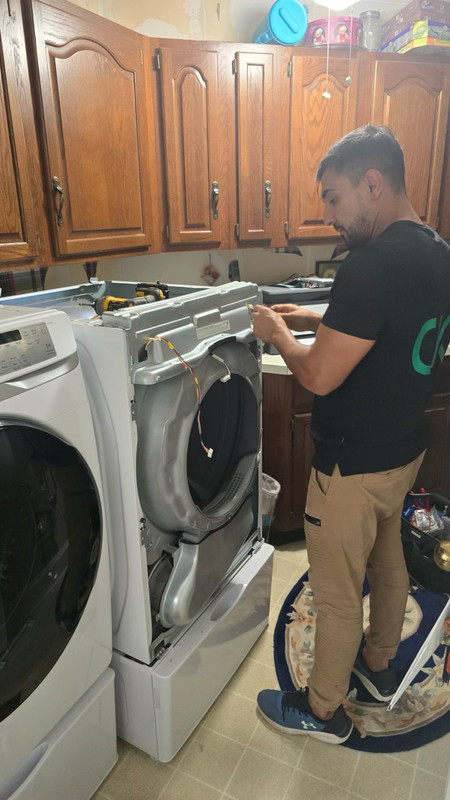A dryer is an essential household helper. When it breaks down, you naturally want to get it back to work as soon as possible. After the warranty period ends, many owners try to fix the issue on their own. This is acceptable, but only if it involves minor and obvious malfunctions:
-
The lint filter is clogged.
-
The condensate container is full.
-
A temporary malfunction occurred after a power outage.
However, if the problem affects key mechanical or electrical components, attempting a DIY repair can only increase the cost of professional restoration later.
This guide is based on the experience of OK Appliance Repair, specialists in washer repair and dryer repair in Charlotte, NC, as well as other home appliances. We will help you distinguish a simple issue from a serious breakdown.
List of Critical Symptoms: When You Need to Call a Technician Immediately
If your dryer is inefficient or completely stops working, pay attention to the type of malfunction. The following symptoms indicate issues with critical components that require immediate professional intervention:
1. The dryer does not turn on
If the appliance is completely unresponsive, this may signal a fault in the control module, power button, or a blown thermal fuse due to overheating. In this case, unplug the dryer immediately and call a technician to inspect the power circuits.
2. No heat
If the drum spins but the air remains cold, the heating element, thermostat, or thermal fuse may have failed. Continuing to use the dryer without heat is pointless – a professional replacement of the defective part is required.
3. The drum does not spin
This issue is often caused by a broken or slipped drive belt, a faulty motor, or a defective start capacitor. Stop using the dryer immediately. If the belt is broken, the motor may run without load and overheat. You will need a belt replacement or motor repair.
4. Loud grinding, banging, or squealing noises
Any loud, unusual sounds, especially metal grinding, indicate worn bearings or drum support rollers. Stop using the machine right away to avoid damaging the drum itself. A technician will need to replace the worn parts.
5. Burning smell or smoke
This is the most dangerous symptom, possibly caused by a short circuit, wiring overheating, or a motor failure. UNPLUG the dryer immediately and do not turn it on again until a professional has inspected it.
6. Clothes stay wet (poor drying)
If cleaning the filters did not help, the issue might be a faulty fan, blocked air ducts, or a malfunctioning moisture sensor. Diagnosis and repair of the air circulation system are required.
What to Check Yourself Before Calling a Technician
Before contacting a service center, check a few simple things – the problem might be temporary:
-
Clean the filters: Completely remove lint from the lint filter (located in the door opening). If your model has a heat pump, clean or wash the heat exchanger according to the manual. Clogged filters are the most common cause of poor drying.

-
Check the container: Make sure the condensate tank is not full (if your dryer is not connected directly to a drain).
-
Restart the dryer: Unplug it for 3–5 minutes and plug it back in. This can reset a temporary error.
-
Check the load: Make sure the drum is not overloaded with laundry.
If these steps do not resolve the issue, the malfunction is likely serious and requires assistance from OK Appliance Repair specialists.
How to Communicate Properly with a Technician
To speed up the repair process, provide the following information when contacting the service center:
-
Brand and model of your dryer.
-
Exact description of the issue: not heating, not spinning, making noise, or not turning on.
-
Circumstances: when the problem started (after cleaning, power surge, or mid-cycle).

Technician’s tip: The more detailed your description of the symptoms, the better the specialist can prepare for the visit and bring the necessary parts for fast and efficient repair in Charlotte, NC.
